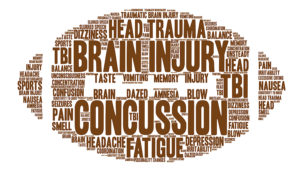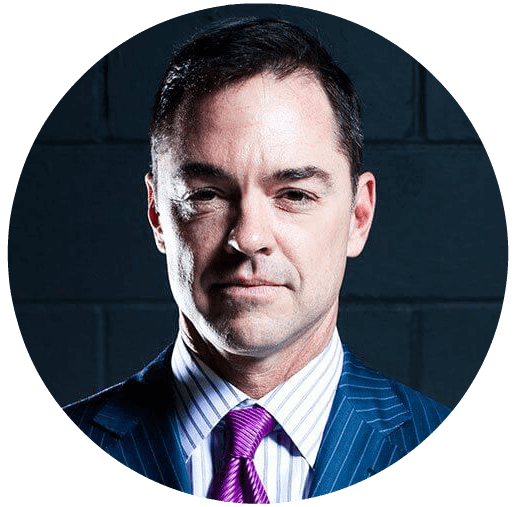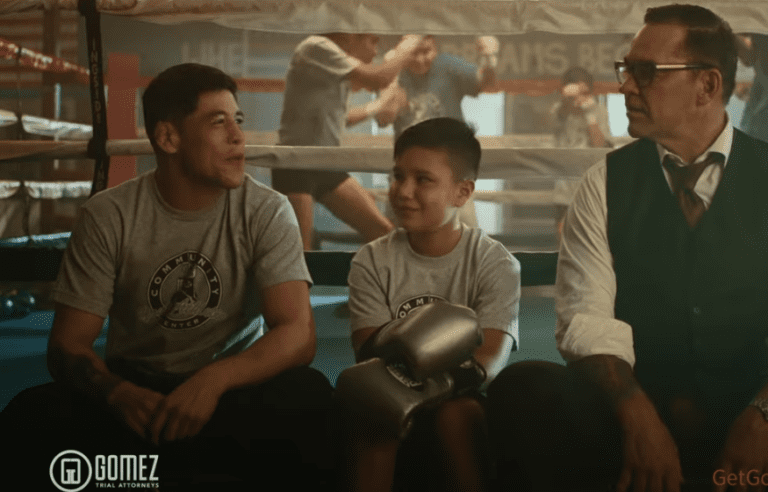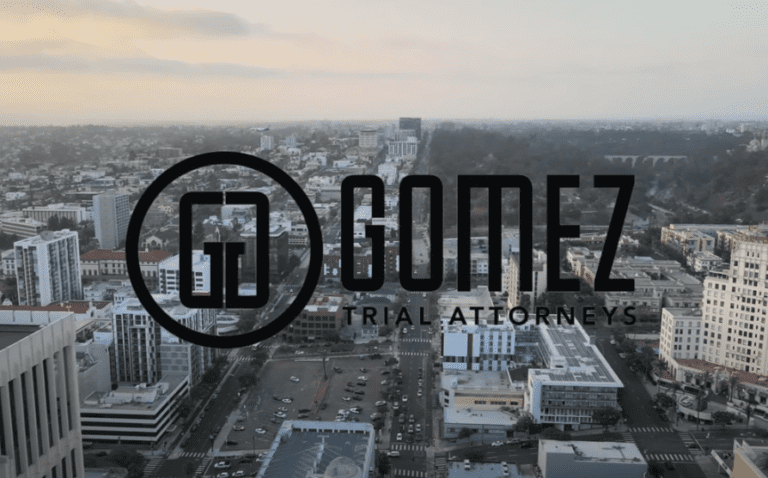Until the media began discussing Chronic Traumatic Encephalopathy (CTE) a few years ago, you probably did not know that concussions were so common. Even with the high-profile publicity, you still might not have realized that a concussion is a “mild” traumatic brain injury (mTBI). This often missing but critical piece of information changes how people view the diagnosis.
 Unless a person realizes that concussion is simply a less-scary name for a brain injury, they often do not take the injury seriously. Even then, when they hear the word mild affixed to it, they may not realize that mild refers only to the initial presentation of symptoms, not the long-term outcomes they might face—and they could prove anything but mild.
Unless a person realizes that concussion is simply a less-scary name for a brain injury, they often do not take the injury seriously. Even then, when they hear the word mild affixed to it, they may not realize that mild refers only to the initial presentation of symptoms, not the long-term outcomes they might face—and they could prove anything but mild.
When a patient does not recognize the risk, it could stop them from getting the treatment they need.
An information disconnect exists between concussions and TBIs. That is likely why some people still view a concussion as a minor bump on the head. They do not always seek timely treatment or curtail their activities enough to properly recover. Young athletes sometimes return to normal activities with untreated or unresolved complications. In contact sports, this can set athletes up for subsequent brain injuries and continuing damage. Concussions generate similar issues for non-athletes as well.
When someone receives a concussion diagnosis, it is important to immediately recognize that this is a brain injury. The shift in diagnosis often means a more focused treatment strategy. It is also important to understand that organized sports are not the only way that people can sustain concussions. You might not hear about other people’s brain injuries on the news. Still, they occur every day under a variety of circumstances. They are a major cause of injury and death for older people.
These simple shifts in understanding should encourage an injured person, their parent, or their caretaker to consider the symptoms at the point of injury. Instead of pushing to get back in the game, concussion victims must seek timely treatment and meet recommended recovery protocols.
A Concussion Is a Traumatic Brain Injury
Concussions often occur when a person receives a blow to the head. They also happen when a body endures a severe jolt, such as during a vehicle crash, fall, or while playing in a football game. When an event like this happens, the forceful movement sometimes slams the brain around inside the skull. This is often a momentary trauma, so people do not always take the consequences seriously. If the injured person and those surrounding him dismiss the symptoms without further investigation, it often prevents recovery and leads to additional symptoms.
People easily overlook concussions because these injuries do not often involve open lacerations or bloodshed. Unless a concussion victim has other wounds, they rarely display obvious signs of an injury. As the American Society of Neuroradiology explains, concussions and other traumatic brain injuries do not show up on CT scans. This lack of visible evidence often gives patients, family members, or their caretakers the impression that no serious injury has occurred.
That is why an initial concussion assessment must involve gauging the feelings and sensations of the person who was injured. The injured person might not be aware of his or her surroundings, so others must observe and judge their reactions. The symptoms often worsen when a person receives untimely or inadequate treatment. If they sustain another concussion before the first one heals, the damage is often cumulative and worsens.
The TBI-Concussion Information Disconnect
A concussion is a traumatic brain injury that changes the way a person functions. That information is not always conveyed during treatment, especially when a young patient is involved. Medical facilities often under-explain the diagnosis to injured children and their families. They also mislabel medical documents to reflect a lesser injury. That is what a group of physicians determined when they examined 434 children’s hospital records.
Their study, “My Child Does not Have a Brain Injury, He Only Has a Concussion,” offered several conclusions for this information disconnect.
- Medical institutions use the concussion diagnosis, but offer no consistent definition for the term.
- Physicians use eight different concussion grading scales, but there is no scientific evidence to support them.
- Children often receive a concussion diagnosis when a traumatic brain injury diagnosis is more appropriate.
- Hospitals often allow earlier releases for children diagnosed with concussion injuries than they do for brain injuries.
- A concussion diagnosis often predicts an earlier return to normal activities.
- Physicians likely use the concussion diagnosis as it is less likely to alarm parents.
Sports and Concussions
Despite physicians’ tendencies to use less-frightening terms, developments in the sports community have increased brain injury awareness. California Health and Safety Code now addresses child athletes’ brain injuries. Unfortunately, the language in the law perpetuates the TBI-concussion information disconnect. Recent legislative revisions upgraded youth athletes’ concussion prevention and treatment protocols, but failed to explain that concussions are actually brain injuries. The text mentions “concussion” 16 times and “head injury” 12 times, but provides zero references to the brain.
Fortunately, the law mandates that each child athlete’s family receives a Concussion Head Injury Information Sheet. California Interscholastic Federation’s CIS thoroughly explains concussions and brain injuries. It further discusses the range of possible symptoms and complications. The CIF Graded Concussion Symptom Checklist is a supplement that helps parents, coaches and coaches’ assistants make decisions about treatment for students with possible head injuries.
How Did Organized Sports Make the Connection?
In 2002, California forensic neuropathologist, Dr. Bennet Omalu, was one of the first physicians to document irregular formations in an NFL athlete’s brain. He eventually associated the damage with unresolved concussions. His research revealed that each concussion was an additional assault on an already damaged brain. When an athlete failed to allow the initial concussion enough time to heal, this allowed the existing damage to worsen.
His disease diagnosis, Chronic Traumatic Encephalopathy (CTE), has since changed the way people view sports participation. Parents and young athletes now understand that the brain is at risk with each jolt, blow, or bump an athlete endures while playing sports.
Dr. Omalu was not the first medical professional to study athletes’ damaged brain tissues. He was simply one of the first to gain widespread publicity because of his findings. Eventually, researchers, physicians, sports organizations, and many others acknowledged that CTE was a genuine problem for many athletes. Once sports authorities realized that CTE was a consequence of unresolved concussions and even accumulated, smaller microtraumas, it changed concussion treatment protocols in all sports.
Sports organizations in California and across the country have adopted new rules. While concussions still occur, they have laws, guidelines, and protocols that require athletes to take time to heal after experiencing this injury.
It Is Not Just About Sports
Recent data from the Center for Disease Control and Prevention (CDC)—Youth Risk Behavior Survey (YRBS)—reported that 15.1 percent of responding students (approximately 2.5 million) reported having had at least one concussion. Six percent of the students reported having two or more concussions. Students playing more than one sport are even more at risk. The YRBS confirmed that young athletes sustain brain injuries in overwhelming numbers, but concussions are not just athletes’ problems.
Non-athletes encounter numerous situations where concussions could be a consequence. Over their 30-year history, the National Data and Statistical Center has tracked 18,126 patients enrolled in the Brain Injury Model Systems Project. They collect and analyze data from patients with a range of brain injuries.
The organization has determined that brain injuries often occur during everyday events.
- Vehicular, 50 percent
- Falls, 28 percent
- Violence, 11 percent
- Other causes, 11 percent
They have also learned that men sustain brain injuries more frequently than women (74 percent vs 26 percent). Single men sustain more brain injuries than married men (46 percent vs 33 percent). They have also determined that patients were an average of 42.39 years old when they sustained their brain injury.
The Center for Disease Control and Prevention (CDC) explains that head injuries are a problem for older adults, as well. Each year, over 3 million adults, age 65 and older, receive emergency medical treatment because of falls. Head injuries and hip fractures are the most frequently sustained injuries. As many seniors take blood thinner mediation, this increases the potential risk for brain damage severity.
Diagnosing a Concussion
The diagnostic process is critical to attaining proper treatment for concussions and other brain injuries. Screening should begin immediately after an incident occurs. It is up to the injured person and those around him or her to recognize a problem and seek medical help. As the Brain Injury Association of America explains, concussion symptoms “range from being hard-to-see to quite obvious.”
The patient or observer will only notice symptoms after the injured person attempts to communicate or interact. The CDC explains that some symptoms can take hours or days to appear.
An injured person likely requires emergency medical treatment when their symptoms include:
- Increasing confusion or agitation
- Worsening headaches
- Numbness or weakness
- Blurred vision, one enlarged pupil
- Convulsions or seizures
- Slurred speech
- Dazed or confused appearance
- Loss of consciousness
When a young child or infant sustains a head injury, parents or caregivers should watch for the above symptoms. They should also pay attention if a young child cries non-stop or refuses to eat or nurse.
Recovering From a Concussion
The recovery process is different for each person. Many people feel better within a few days after a brain injury. For others, the difficulties sometimes linger. The recovery process requires patience regardless of how simple or fast it is.
Doctors usually prescribe rest, sleep, and a multi-step return to normalcy.
- Rest: Limit all activities, including thinking.
- Light activity: Relax and return to non-strenuous activities.
- Moderate activity: Return to regular activities. Take breaks if symptoms continue.
- Back to normal activity: When a patient is fully recovered, they can return to normal activities without residual symptoms.
The Brain Injury Association of America (BIA) suggests that most concussion patients return to normal within two to three weeks. If symptoms continue past 14 days, they recommend scheduling a visit with a physician who specializes in concussion management.
What Happens When a Patient Does Not Recover Right Away?
Each patient is different and each brain injury is unique. This is important to understand, as some patients develop long-term problems. The Concussion Legacy Foundation explains that a person whose symptoms last longer than three months is likely experiencing post-concussion syndrome (PCS).
The foundation estimates that PCS affects 10 percent of high school athletes and 5 to 30 percent of patients in other demographics. They believe that age, sex, and medical history often determine if a patient will manifest this condition. An older female patient with a concussion history and a severe current injury has the highest risk.
Patients who sustain a second concussion before the initial brain injury heals, occasionally sustain what a UC, Irvine School of Medicine study calls Second Impact Syndrome (SIS). Their review describes SIS symptoms as “diffuse cerebral swelling and brain herniation.” Although the authors explain that the condition is potentially fatal, they consider it to be rare.
While many people anticipate fast recoveries, both adult and child concussion patients report ongoing problems. They sometimes suffer from seizures, headaches, and dizziness. Others report cognitive impairment, including memory lapses, recall difficulties, PTSD, and other issues.
Do You Need a Traumatic Brain Injury Attorney if You Have a Concussion Injury?

If someone caused you or your loved one’s concussion, you must keep in mind that this is not a simple injury. You should consult a brain injury lawyer immediately for a case evaluation. Every concussion is a brain injury, and it is important to take it seriously. While your injuries could heal quickly, there is always a possibility that you could suffer from long term consequences.
Brain injury attorneys protect their clients’ legal interests while they focus on their recovery. An attorney can deal with the negligent parties that caused their clients’ injuries. They can talk to insurance companies and defense attorneys and sort out liability and damage issues on their clients’ behalf.
Your initial consultation with a brain injury lawyer is an informational meeting only. You tell your story and ask questions. The attorney talks to you about your case and explains your legal options. You always retain the right to make your own choices. You do not have to commit to making a claim or filing a suit until you are ready.
Gomez Trial Attorneys
655 West Broadway, Suite 1700
San Diego, CA 92101
Phone: (619)-237-3490







